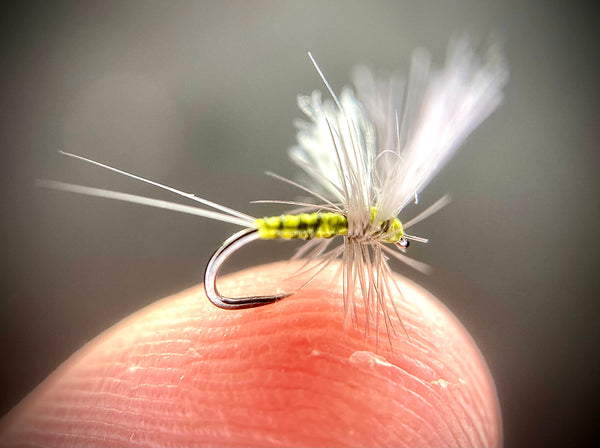
Blue Winged Olive Fly (BWO)

One of the first things to know in speaking about Blue Winged Olives is that there is nothing simple other than the name. There are up to 25 subspecies of the Genus Baetis that is a member of the Mayfly family. To simplify things we just call them Blue Winged Olives, and understand that there are many different species that fall into this from region to region, and even within the same region. This is why there are so many differing variations of what one would think would be a simple pattern. The patterns vary in both size and color of body, and sometimes even the wings. Because of all these variations in size and color it is impossible to match all of them with one specific pattern. You will find success though in matching the size properly with a close shade of color. This very reason is why the Adams fly is so effective because it doesn't match anything in particular but a shade that stays in line with a lot of different colors, and fished in the proper size is extremely effective.

Blue Winged Olives or as many anglers reference them BWOs are an extremely important part of the ecosystem in our fisheries. They provide a healthy and abundant opportunity for our fish to feed and grow. They are generally a smaller size in sz16 to sz20. What these bugs lack in size though they make up for in pure numbers. These are some of the most prolific hatches you will ever encounter on the water. When this hatch begins you will see many noses touching the surface creating those beautiful rings any dry fly angler is constantly searching for. In looking for key locations to find these look for water that has vegetation and shallow gravel runs.

The Genus Baetis, or BWO is an olive color with grey or dun colored wings. They will often vary in size and color slightly based on the subspecies, and region. This genus rules the water as food source from about late September to April, and has its most prolific hatches in February and March. This is going to change based upon your location, and weather. You will find them in all forms of moving water, but pay close attention to slow to moderate runs. There you will find large bodies of these flies. The nymphs are also know to be extremely active in the early morning and evenings as the hatches have subsided moving short distances to find and relocate to new homes. Because of this you have the opportunity to be vastly successful fishing everything from dries, cripples, emergers, and nymphs.

When fishing BWO nymphs you can be productive fishing with a tight line technique, dead drift under an indicator, or swinging the fly. Choose your method on your comfortability. Often times it is effective to fish these patterns in tandem with a dry dropper nymph, or trailing cripple or emerger. Our personal favorite is to trail a cripple behind the dry during the times fish are eagerly rising and feeding off the surface. If the top water feeding isn't as effective we like to trail a soft hackle emerger on a heavier wire hook to get it just below the surface film, and then move to adding in a nymph. The beauty is though you get to choose what is the method that works best for you.

Water temperature is extremely important to whether or not you may encounter a prolific hatch of BWOs, but they will hatch in all kinds of weather conditions and times of day. They need the water temperature to reach a minimum of 40 degrees F. Best times of day for the hatch is mid day to evening. If there is a forecast of it being overcast or rainy don't leave behind your BWO box because this may be a great opportunity to catch fish specifically keying in on these as they are the only food opportunity on the top at the moment.

Leave a comment